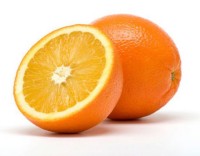Each year, over 15 million people worldwide suffer from a stroke. As the second-leading cause of disability and death in people over the age of 60, stroke is devastatingly common. Fortunately, a familiar nutrient can drastically reduce the odds of it occurring. Research published in the American Journal of Clinical Nutrition and Stroke: A Journal of Cerebral Circulation found vitamin C to be exceptionally helpful in preventing strokes.
Identification and Health Consequences
When blood circulation to the brain fails, either from an obstruction or blood vessel rupture, brain cells begin to die from lack of oxygen, indicating that we’ve had a stroke. The event doesn’t discriminate between race, sex or nationality – even babies within the womb can have a stroke. The three different classifications include:
Ischaemic strokes, which occur when a blood vessel to the brain becomes blocked. This is the most common form, accounting for 87 percent of all cases.
Haemorrhagic strokes, which transpire when a weak blood vessel ruptures – aneurysms and arteriovenous malformations are two examples. The most frequent cause of this type is due to high blood pressure.
Lastly, transient ischaemic attacks, which are triggered by a temporary blood clot. It’s a “mini-stroke” and serious warning sign of dangerous blockages in the future.
As a major cause of disability, stroke is responsible for confusion, paralysis and loss of vision and/or speech – which is why prevention is so important.
Steering Clear of Stroke with Vitamin C
As we age, proactive steps can be taken to minimize the risk of experiencing a stroke. Researchers have found one of the best forms of prevention is a diet high in vitamin C. The Linus Pauling Institute remarks on two studies that found a positive correlation between vitamin C and reduced stroke risk:
“With respect to vitamin C and cerebrovascular disease, a prospective cohort study that followed more than 2,000 residents of a rural Japanese community for 20 years found that the risk of stroke in those with the highest serum levels of vitamin C was 29% lower than in those with the lowest serum levels of vitamin C. Additionally, the risk of stroke in those who consumed vegetables 6-7 days of the week was 54% lower than in those who consumed vegetables 0-2 days of the week. Similarly, the EPIC-Norfolk study, a 10-year prospective cohort study in 20,649 adults, found that individuals with plasma vitamin C levels in the top quartile (25%) had a 42% lower risk of stroke compared to those in the lowest quartile. In both the Japanese and EPIC-Norfolk populations, serum levels of vitamin C were highly correlated with fruit and vegetable intake.”
The Institute acknowledges that it’s “difficult to separate the effects of vitamin C from the effects of other components of fruits and vegetables.” Nonetheless, blood plasma levels of the vitamin are still considered to be an excellent biomarker for reduced risk – a point that was firmly established in both studies. [1][2]
What we can say is that increasing your blood levels of vitamin c through highly absorbable liposomal vitamin C has numerous benefits – including a reduced stroke risk when taken consistently.
Sources:
1. “Serum vitamin C concentration was inversely associated with subsequent 20-year incidence of stroke in a Japanese rural community. The Shibata study,” Yokoyama T, Date C, Kokubo Y, Yoshiike N, Matsumura Y, Tanaka H, Stroke. Retrieved on December 26, 2013, from: http://www.ncbi.nlm.nih.gov
2. “Plasma vitamin C concentrations predict risk of incident stroke over 10 y in 20 649 participants of the European Prospective Investigation into Cancer Norfolk prospective population study,” Myint PK, Luben RN, Welch AA, Bingham SA, Wareham NJ, Khaw KT, American Journal of Clinical Nutrition. Retrieved on December 26, 2013, from: http://www.ncbi.nlm.nih.gov
3. Oregon State University – Linus Pauling Institute http://lpi.oregonstate.edu




